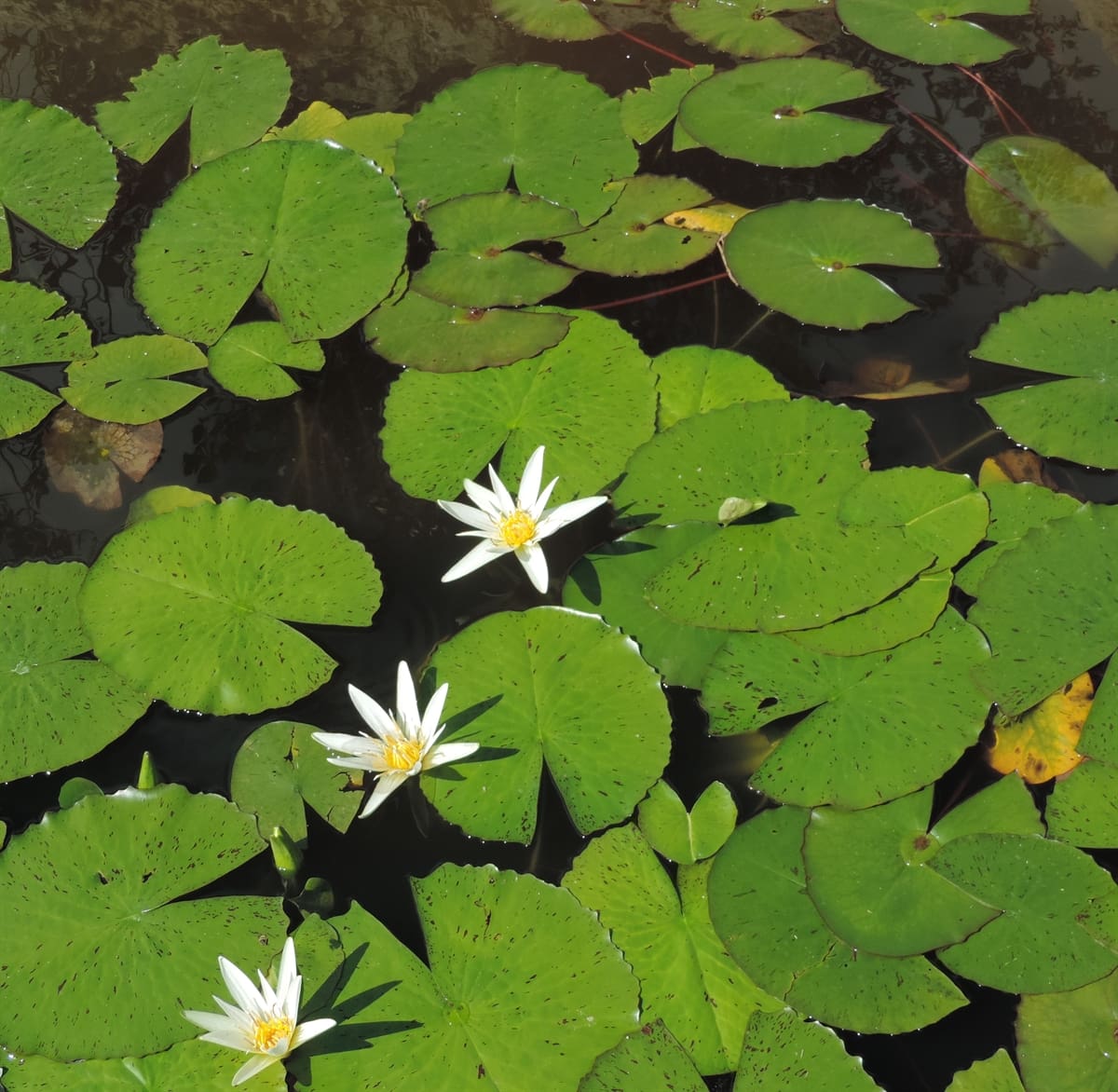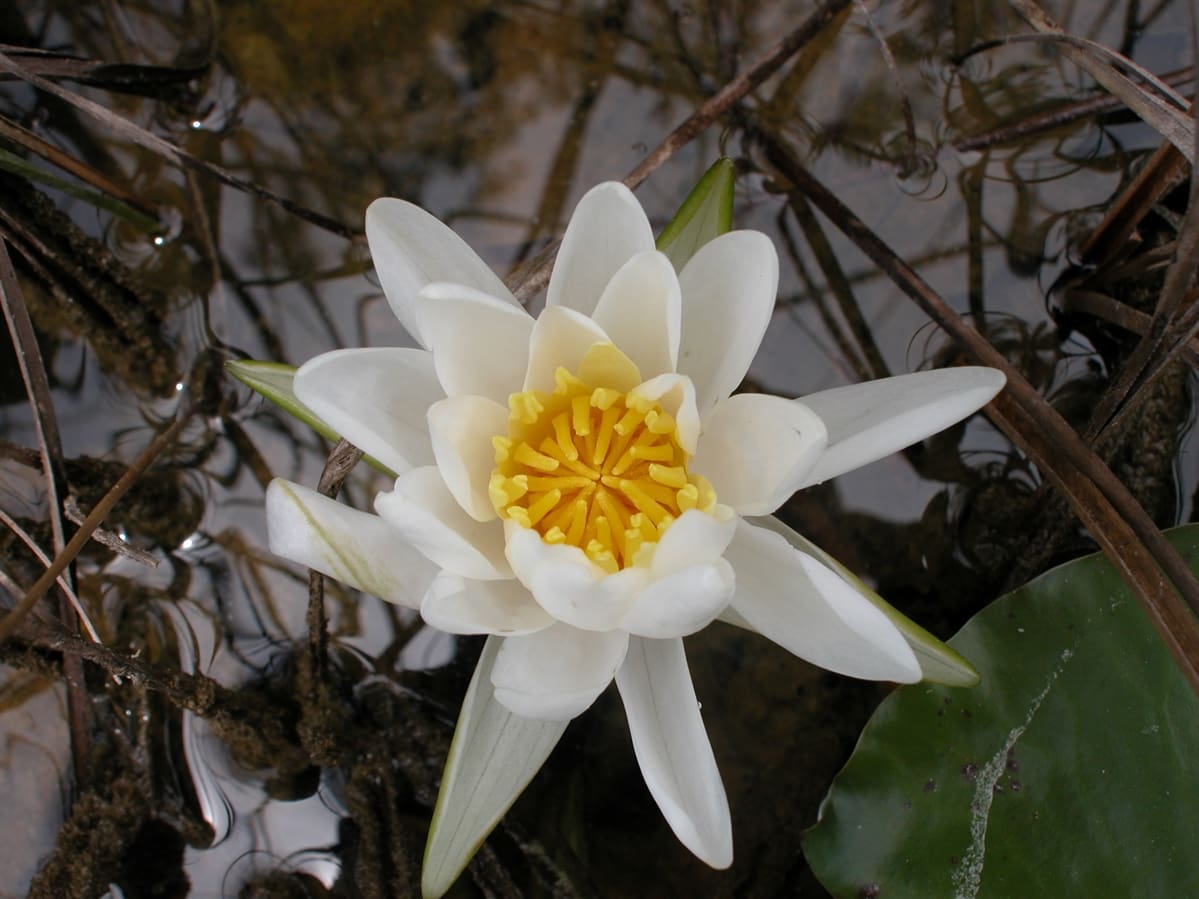As you embark on this intellectual journey through “What Is The Aquatic Weed Nymphaea Ampla,” you’ll uncover the nature of Nymphaea ampla as a particular type of aquatic flora. You shall explore the ecological role of this aquatic weed, its unique characteristics, and its interaction within the ecosystem, providing a compelling perspective on a commonly overlooked organism. This exploration is set against an educational backdrop, encapsulating key scientific finds and research. Prepare to broaden your understanding of this wonder of the natural world – the aquatic weed, Nymphaea ampla.
Overview of Nymphaea Ampla
Nymphaea Ampla, commonly known as the water lily in the English language, is an integral part of the botanical family Nymphaeaceae.
Scientific classification of Nymphaea Ampla
Categorically, it falls under the genus Nymphaea and is categorized as ‘Ampla’. The genus, Nymphaea, consists of about 50 different species of water lilies and Nymphaea Ampla is one of them. It is a perennial aquatic plant that is native to several parts of the world.
Common names and synonyms
Apart from being known as a White Water Lily, this species also has a variety of synonyms namely – Nymphaea Multiflora, Nymphaea Mexicana, and Nymphaea Hassleriana.
Origins and natural habitats
It originates from the warm temperate and tropical regions of the world. The natural distribution of Nymphaea Ampla extends from Mexico to Central America and the West Indies. It is adapted to grow in slow-moving or still bodies of water like ponds, swamps, and lagoons.
Physical Characteristics of Nymphaea Ampla
Fundamentally, the Nymphaea Ampla is a bright aquatic plant that exhibits a host of characteristic features including its leaf structure, flower and root structure.
Leaf structure and characteristics
The oval-shaped leaves of the Nymphaea Ampla are usually green on its upper surface and reddish-purple underneath. They often float on the surface of the water and are 15-30 cm in size. The leaf margins are lobed and slightly wavy, creating a unique pattern that enhances the plant’s aesthetics.
Flower structure and characteristics
The flowers are notable for their large size and captivating beauty. The blossoms are white in color, circular and possess numerous stamens that structure a yellow core. These flowers open in the morning and close at dusk and have a faintly sweet scent.
Root structure and growth pattern
The plant has a sturdy rhizomatous root system that anchors it to the muddy or sandy floor of its aquatic habitat. The roots also contain air spaces known as aerenchyma, which allow them to survive in anoxic conditions by assisting in gas exchange.

Life Cycle of Nymphaea Ampla
The life cycle of the Nymphaea Ampla is a remarkable process, from seed production to regeneration.
Seed production and germination
Each flower produces numerous seeds within a berry-like fruit. Once the seed is mature, it gets detached from the parent plant and falls into the water. It then sinks to the bottom of the water body, where germination occurs.
Growth process
Following successful germination, the young plant develops a root system that anchors it to the bottom of the water body. It also starts the process of chlorophyll synthesis with the assistance of light.
Maturity and flowering
With the development of numerous floating leaves, the plant shifts towards the maturity phase. After reaching maturity, it starts producing flowers and seeds, hence continuing its lifecycle.
Seed dispersal and regeneration
Seed dispersal typically takes place via water currents. The seeds also possess the ability to remain dormant for long periods until conditions are suitable for germination.
Ecological Impact of Nymphaea Ampla
The Nymphaea Ampla performs a vital role within the ecosystem, with significant impacts on water quality, aquatic life, and overall biodiversity balance.
Role in aquatic ecosystems
Besides adding aesthetic appeal to water bodies, Nymphaea Ampla also provides shelter and food for diverse aquatic organisms. The floating leaves serve as a substrate for several invertebrates and also provide shade that regulates water temperatures.
Interactions with other aquatic plants and animals
Nymphaea Ampla coexists harmoniously with numerous aquatic plants and animals. For amphibians and fish, it provides a safe breeding ground. It also aids in concealing and protecting small fishes from their predators.
Impact on water quality and flow
Nymphaea Ampla plays a crucial role in purifying water. It absorbs nutrients and heavy metals, preventing the development of harmful algal blooms. Moreover, the plant’s compact structure aids in reducing water flow, thereby controlling soil erosion.

Cultural Significance of Nymphaea Ampla
Nymphaea Ampla enjoys a high cultural and historical significance across different cultures and civilizations.
Historical and mythical importance
In many ancient civilizations, Nymphaea Ampla was considered sacred due to its brilliant bloom that signifies resurrection and rebirth. It was a significant symbol in Egyptian mythology, where it is associated with the sun god and often depicted in art and hieroglyphics.
Cultural symbolism
In various cultural contexts, Nymphaea Ampla symbolizes purity, tranquility, and enlightenment. It is often used in religious rituals and ceremonies.
Utilization in art and literature
Owing to its aesthetic appeal, Nymphaea Ampla has served as an inspiration in the realm of art and literature. Numerous poets and writers have mentioned this elegant flower in their works, and it has been a frequent subject in many paintings and sculptures.
Medical and Therapeutic Uses of Nymphaea Ampla
This aquatic plant not only has ornamental value but is also known for its numerous medicinal and therapeutic uses.
Traditional medicine usage
In traditional medicine systems, different parts of Nymphaea Ampla have been used to treat various ailments. The plant’s roots and leaf extracts were used in treating digestive problems, infections, and other ailments.
Modern therapeutic potential
Modern research is exploring the possible health benefits of Nymphaea Ampla. Some studies suggest that it has potential therapeutic applications in the treatment of insomnia, anxiety, and other neurological disorders.
Safety and side effects
Although the plant possesses numerous health benefits, its usage should be done under professional supervision. Like any other medicinal plant, it may cause allergic reactions or other side effects in some individuals.

Culinary Uses of Nymphaea Ampla
Surprisingly, Nymphaea Ampla also finds its place in the culinary world.
Edible parts of the plant
The rhizomes, flower buds, and young leaves of Nymphaea Ampla are edible. They can be consumed raw or cooked and are known to have a mildly sweet flavor.
Traditional and modern recipes
Traditional communities often used these parts in soups, salads and as a vegetable side dish. Modern chefs have also started incorporating Nymphaea Ampla in their gourmet recipes due to its unique flavor.
Nutritional contents and benefits
Nymphaea Ampla is a good source of dietary fiber, vitamins, and other essential nutrients. Thus, its incorporation in a diet would provide multiple health benefits.
Cultivation of Nymphaea Ampla
The cultivation of Nymphaea Ampla requires certain specific conditions and techniques.
Growing conditions
Nymphaea Ampla thrives best in warm temperatures and full sun to partial shade conditions. It prefers still or slow-moving water bodies with neutral to slightly acidic pH levels.
Cultivation techniques
Propagation is usually done through seeds or rhizome cuttings. The seeds or cuttings are initially started in small containers and then transplanted to their final location when they’ve developed a substantial root system.
Propagation and care tips
For best growth, maintain appropriate water depth, and prevent overcrowding of the water surface with floating leaves. Regularly remove dead leaves and flowers to prevent decay.

Nymphaea Ampla as Decorative Aquatic Plant
One common usage of Nymphaea Ampla is its application as a decorative aquatic plant.
Use in ponds and water gardens
Due to their spectacular beauty and calming presence, these plants are often used as centerpiece plants in water gardens and ponds.
Companion plants and design ideas
Nymphaea Ampla offers versatility and can be paired with various other aquatic plants. It is often used alongside reeds, papyrus, and lotuses in water gardens for an attractive display.
Care and maintenance in decorative settings
Similar to their cultivation, they require regular removal of decaying parts for their healthy growth. Also, they must be protected from frost and cold temperatures as they are sensitive to the cold.
Conservation and Threats to Nymphaea Ampla
Even though Nymphaea Ampla is not currently at risk, it’s always essential to responsibly preserve and conserve this species.
Current conservation status
Presently, Nymphaea Ampla is not categorized under any threat status on the international conservation scene and is relatively stable in most of its natural habitats.
Threats and challenges
Like any other aquatic plant, Nymphaea Ampla faces challenges in its conservation. Pollution, habitat loss, and climate change are among the top threats to this species.
Conservation efforts and strategies
Conservation of this species requires a multifaceted approach that includes preserving and restoring its natural habitats, reducing pollution levels in water bodies, and raising awareness about its significance and value.
